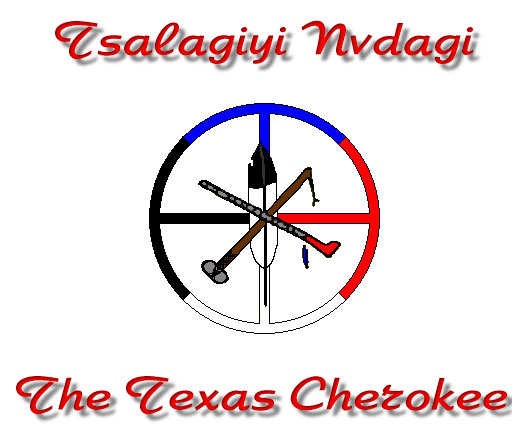Crafted from large gourds or carved from buckeye wood, the masks represent faces of foreigners, such as Africans, Germans, French, Chinese, or other Indian tribesmen.
The Cherokee also make masks of hollowed-out hornet or wasp nests to personify mean or evil whites, or whites consumed by a disfiguring illness such as smallpox. Dyed with vegetable pigments and decorated with bits of fur to suggest eyebrows, beards, and mustaches, the masks also have decidedly sexual connotations.
For example, a mask might feature a large pendulous gourd for a penis-like nose, surrounded by a base of opossum fur to represent pubic hair. These caricatures of genitalia represent a Cherokee belief in outsiders’ obsession with sex.
In 1935 and 1936, anthropologist Dr. Frank Gouldsmith Speck observed performances of the Booger Dance at the Cherokee’s western North Carolina reservation and recorded what he saw.
The Booger Dance contains four distinct components, or “acts.” In the first act, according to Speck, after about thirty minutes of social dancing, four to ten or more masked men stamp into the performance area, a room in a private residence, in a state of general mayhem.
They wear simple costumes of ragged European-style garb, sheets, and bed quilts, draped over their bodies and shoulders, and sometimes over the head. Some of the Boogers fall to the floor in feigned convulsive seizures; others mockingly strike and push at the spectators in hopes of clumsily manhandling the women and girls.
The Boogers chase the screaming and giggling females throughout the room, all the while underscored with music, obscenely gesturing by thrusting their buttocks to display gourd phalluses. Speck notes that these phalluses sometimes contain water, which when released obviously imply ejaculation. After completing this first sequence, the Boogers compose themselves and take seats on a board or bench near the wall.
The brief second act begins when the host (“the Driver,” since he drives the action of the evening) heralds the strangers’ arrival. In whispered Cherokee, the Driver asks the Boogers’ leader his group’s identity; the leader tells the Driver that they are from a “distant land and going ‘north’ or ‘south’”.
The Driver loudly broadcasts the leader’s response and then asks what the Boogers want, to which they unanimously reply, “Girls!” More fumbling girl-chasing follows and the women respond with more squealing and giggling. The Boogers then impulsively demand a fight, but in their broken Cherokee they announce they want to dance, unwittingly punning the words “dance” and “fight,” which differ in the Cherokee language only in the placement of accent.
At the beginning of the third act, and before the Boogers dance, the Booger leader whispers his mask name to the Driver, who loudly “translates” it. The Booger name follows one of two themes: names of foreigners, such as German, Frenchman, Black or Chinese; or descriptive and obscene names of private parts of the body, such as Black Buttocks, Sooty Anus, Rusty Anus, Big Phallus, and Her [Vagina] Has Long Hairs.
Speck writes that the Boogers then each dance a personal clown dance of “awkward and grotesque steps” resembling “a clumsy white man trying to imitate Indian dancing.” The Booger is a very real threat and not a diluted caricature for the Cherokee to digest more easily. The Booger is, for the Cherokee, a local symbol, corresponding to the universal symbol or archetype water, and it represents Chaos, Chaos capable of annihilating order but also of restoring order.
The Booger’s name is taken for the first word of the song and each time the name is chanted, the audience erupts in applause and shouting. After the clown-dances, the Driver invites the Booger leader and his troupe to dance the Eagle or Bear Dance, dances of peace and honor.
The leader whispers his decision (the Eagle Dance, the usual choice) to the Driver and an intermission of five-to-ten minutes follows to prepare for the subsequent dance. The Boogers remain seated on their bench or rush outside for a break.
After the intermission, and before the peace dance, the singers chant a song demanding tobacco for their services. The Driver then fills and lights a pipe, taking a puff for himself. He offers the pipe to the drummer and the singers, who each take a puff. Once all of the musicians have partaken in the smoking ritual, the Driver puts the pipe away.
The Driver then places a deerskin on the floor before the Eagle Killer, whom Speck calls the dramatic star of the evening, indicating the importance of the Eagle Dance and of the eagle itself. The Eagle Killer, as his name denotes, killed the eagle to obtain the feathers essential for the Eagle Dance.
The Driver presents the Eagle Killer with symbolic gifts in honor of his deed. These gifts traditionally included a deerskin (for moccasins), tobacco (to calm the nerves), a knife, lead and powder (for livelihood), and buttons and pins (for the Eagle Killer’s female relations). According to Speck, however, by 1936 five cents had supplanted the traditional gifts.
The fourth and, according to Speck, most important act of the Booger Dance proper then begins. The singers chant the song of the Eagle Dance and the Boogers move onto the floor with the Cherokee men who begin to dance the peace dance.
The dancers, impersonating eagles flying higher and higher to escape the hunter’s arrows, circle gracefully with their arms outstretched, right hands clutching wands of seven eagle feathers, gourd rattles in the left. In ancient times, the Cherokee carried entire eagle tails, but as the birds became scarce they substituted wands of sourwood (believed to hold power against witches) holding feathers of the sacred number seven.
Cherokee women then join the Boogers in the Eagle Dance, one woman for each masked figure. As the women serenely dance, each carrying an eagle-feather wand in her left hand and nothing in the right, the Boogers advance upon them sexually.
They desecrate the purity of the dance, mocking the hospitality of the Indians, and, for Speck, symbolically mime the cultural “rape” of the Cherokee. They exhibit their gourd phalluses, obscenely bumping and grinding. Unperturbed, the women continue to dance with great dignity.
At the close of the dance, the Boogers boisterously bound for the door. The Boogers make one last grab for an unwary female, but fail to drag off their struggling victim. They run into the night, leaving the spectators in side-splitting laughter. The Boogers then return, sans masks and costumes, as well-behaved Cherokee men, and the social dancing and party continue.
Sources: “Returning to the Sacred:
An Eliadean Interpretation of Speck’s Account of the Cherokee Booger Dance,” by William Douglas Powers, The Journal of Religion and Theatre, Vol 1, No 1, Fall 2002
http://www.rtjournal.org/vol_1/no_1/powers.html
http://www.chattoogariver.org/index.php?req=booger&quart=F2003
appalachia Dr.+Frank+Gouldsmith+Speck Cherokees Booger+Dance Eagle+Dance Cherokee+NC appalachian+history appalachian+mountains+history





